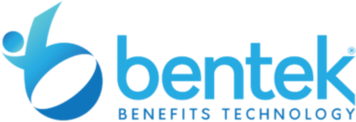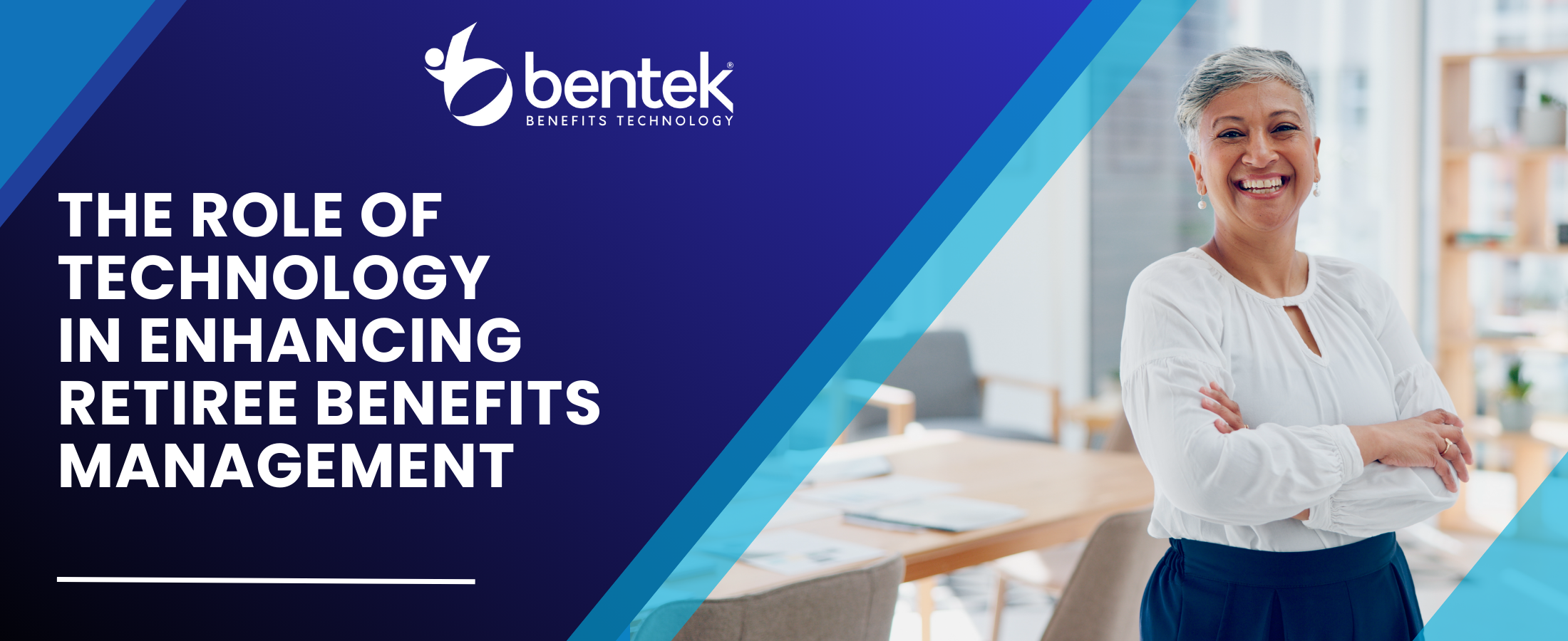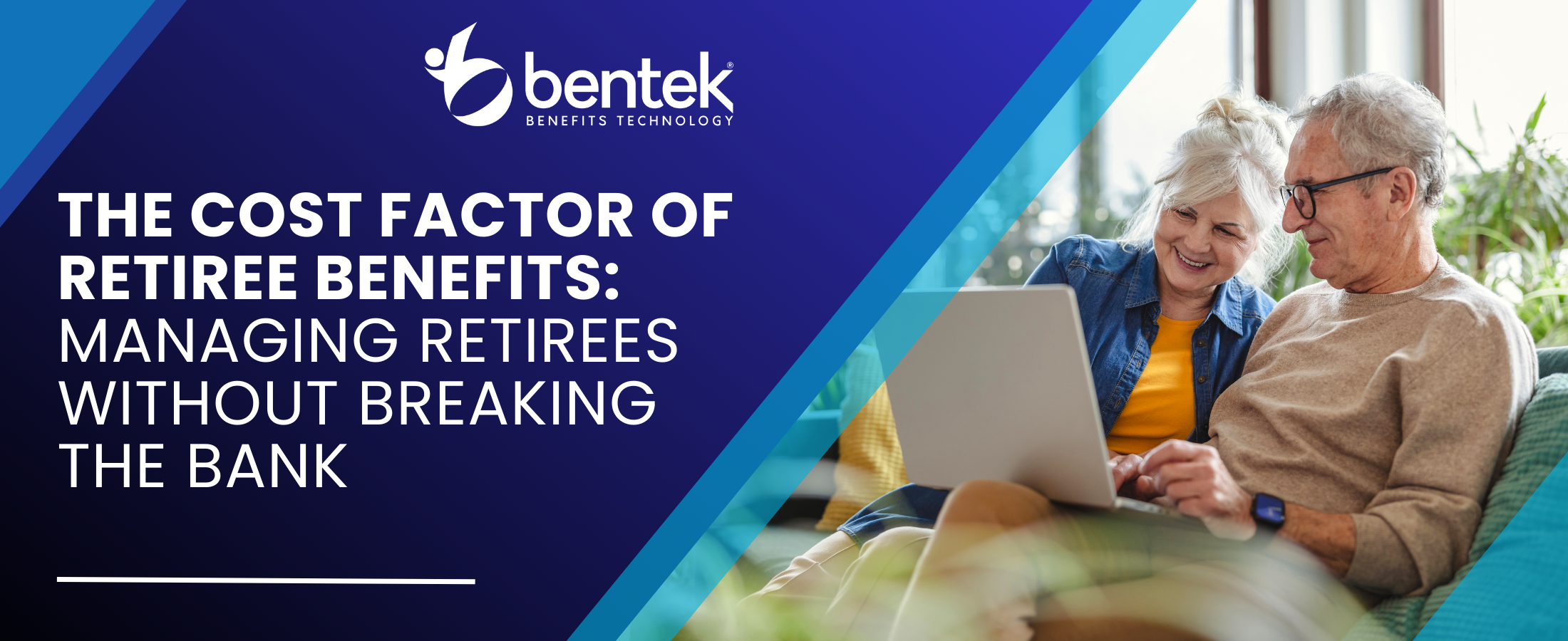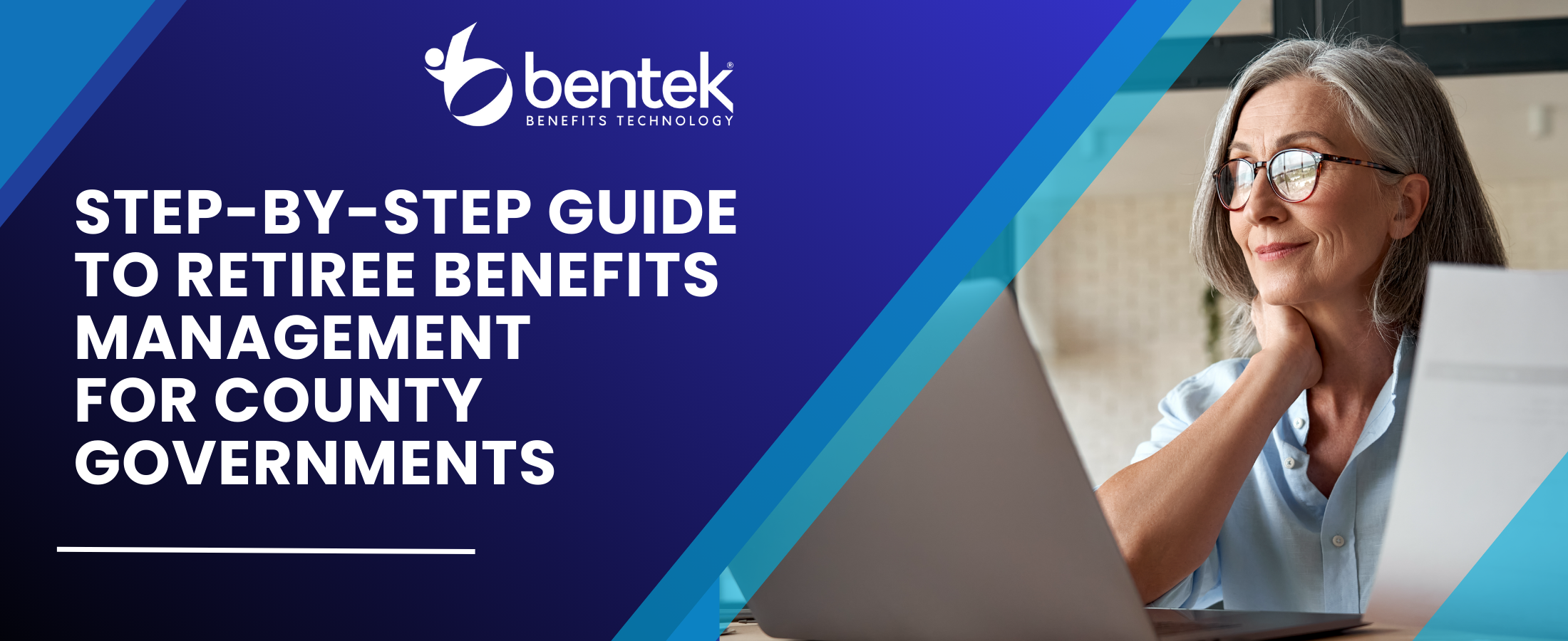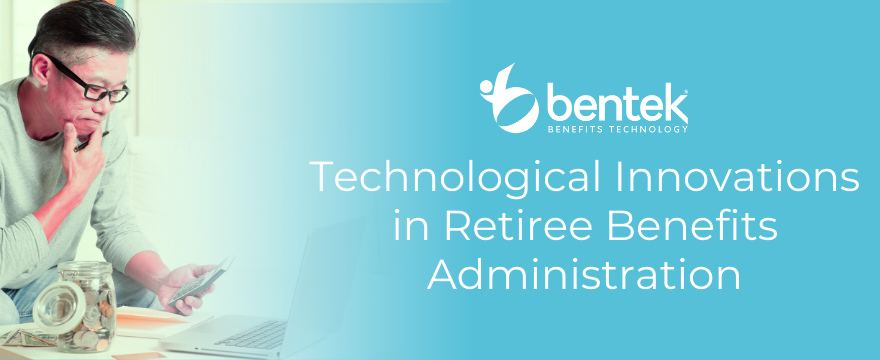Enhancing retiree benefits is a challenge. Managing retiree benefits is one of the most intricate responsibilities HR professionals in government and education organizations face today. These benefits, including pensions and healthcare, are pivotal for the financial and health security of retirees. Yet, many organizations grapple with outdated systems, leading to inefficiencies and compliance nightmares.
In this article, we’ll dive deeper into the evolving landscape of enhancing retiree benefits, emphasizing why they matter, the challenges in administration, and how technology is revolutionizing this critical HR function. Expect to uncover insights into automated benefits management for retirees, the role of retiree benefits software, and the potential of HR tech to transform retiree benefits administration.
Are you ready to explore how digital solutions can streamline your retiree benefits management and ensure compliance?
Introduction: The Evolving Landscape of Retiree Benefits
Why Retiree Benefits Matter:
Public sector organizations, particularly those in government and education, bear the significant responsibility of managing retiree benefits. These benefits, spanning pensions to healthcare, are fundamental in safeguarding the financial and health security of retirees. This role not only demands precision but also a deep understanding of the retirees’ needs and expectations.
Challenges in Retiree Benefits Administration:
Faced with outdated systems, many of these organizations find themselves ensnared in a web of inefficiencies. Heavy reliance on manual processes not only escalates the risk of errors and compliance failures but also hinders the smooth administration of retiree benefits. Moreover, gaps in communication can leave retirees in the dark about their entitlements, exacerbating the challenge.
How Technology is Transforming Retiree Benefits:
Enter the digital revolution. The introduction of digital solutions and automated tools is fundamentally altering the enhancing retiree benefits landscape. From self-service portals that empower retirees to manage their benefits online to AI-driven analytics that enhance decision-making, technology is simplifying the administration of complex benefit programs. This shift is not just about efficiency; it’s about redefining the retiree experience in the digital age.
Key Challenges in Enhancing Retiree Benefits Management
Manual and Paper-Based Processes
In the digital age, it may come as a surprise, but according to Mercer’s Benefit Technology Report 80% of employers still rely solely on spreadsheets to analyze employee benefits. Sadly, managing retiree benefits is no different. This method:
- Leads to inefficiencies: The time-consuming nature of manual data entry and processing slows down the entire benefits administration process.
- Increases error rates: Human error in manual entries can lead to incorrect benefit allocations and dissatisfaction among retirees.
- Places a significant administrative burden on HR departments: HR professionals find themselves swamped with paperwork, detracting from their ability to engage in more strategic activities.
Complexity of Benefit Structures
The variety of retiree benefits, from pension plans such as FERS to healthcare options intertwined with Medicare, introduces:
- Layers of complexity: Each benefit type has its own set of rules and eligibility criteria, complicating the administration process.
- The need for specialized knowledge: HR professionals must possess a broad understanding of various benefit structures, including the intricacies of government programs.
- Challenges in benefits coordination: Ensuring seamless integration between different types of benefits, such as pension plans and Medicare, requires meticulous planning and execution.
Compliance and Regulatory Issues
Navigating the maze of regulations, including the ACA and HIPAA, presents:
- A significant challenge: Keeping abreast of the latest regulatory changes and ensuring compliance is a full-time job in itself.
- The risk of non-compliance: Failure to comply with these regulations can result in hefty penalties and legal complications.
- A need for continuous education: HR professionals must regularly update their knowledge and understanding of relevant laws to avoid compliance issues.
Communication Barriers
Effective communication with retirees about their benefits is vital. This is why 62% of employers plan to increase investment in digital health tools for personalized benefits communication (MetLife). Yet many organizations still face:
- Outdated communication methods: Relying on traditional mail or outdated email systems can delay the dissemination of critical information.
- Timeliness issues: Ensuring that retirees receive timely updates about changes in benefits, enrollment periods, and eligibility criteria is challenging.
- The need for clarity: Communicating complex benefits information in a manner that is easily understandable by retirees requires skill and thoughtfulness.
By addressing these challenges head-on, HR professionals in government and education organizations can efficiently and effectively work on enhancing retiree benefits management. Transitioning from manual to digital solutions, simplifying complex benefit structures, ensuring compliance through continuous education, and improving communication methods are critical steps in this journey.
How Technology Improves Retiree Benefits Administration
Automation & Efficiency
- Benefits Administration Software (BAS): These systems can handle the heavy lifting of benefits enrollment and claims processing, drastically cutting down the time and effort required by human administrators. Imagine a scenario where complex pension calculations and health benefit enrollments, which once took days or even weeks, can now be accomplished in minutes or seconds with pinpoint accuracy. This isn’t just a pipe dream; it’s the reality that technology is bringing to retiree benefits administration.
- Reduced manual workloads: By automating these repetitive tasks, HR departments can redirect their focus from mundane data entry to more strategic initiatives, like retiree engagement and program enhancements. The ripple effect? A streamlined operation that not only saves time but also reduces the potential for costly errors.
Self-Service Portals
- Empowering retirees: With online portals, retirees no longer have to wait on the phone or in line to get the information they need. They can log in from the comfort of their home, at any hour, to view their benefits details, update personal information, or manage their benefit selections.
- Enhanced transparency: This direct access fosters a sense of empowerment and autonomy among retirees, making them feel more in control of their post-retirement benefits and reducing their dependency on HR for information.
Data Security & Compliance
- Protection of sensitive data: Advanced encryption and security protocols safeguard retiree information against unauthorized access, ensuring that personal and financial data remains secure. In an era where data breaches are all too common, these robust security measures provide peace of mind for both retirees and HR professionals.
- Seamless regulatory compliance: With built-in compliance tools, these platforms can automatically update to reflect the latest legal requirements, ensuring that the organization always remains in compliance with laws like HIPAA and ACA without any extra effort from HR.
Seamless Integrations
- Cohesive benefits management: By integrating with existing HRIS, payroll systems, and insurance carriers, retiree benefits platforms eliminate silos and streamline the entire benefits administration process. This means that updates in one system automatically reflect across the board, reducing the need for duplicate data entry and minimizing the risk of inconsistencies.
- Effortless process flow: Whether it’s transitioning from active employee benefits to retiree benefits or coordinating with Medicare, these integrations simplify what used to be complex, error-prone processes. The result? A more efficient, less stressful experience for both HR professionals and retirees.
Personalized Benefits Experience
- Reporting and analytics: By harnessing the power of real-time reporting and advanced analytics, retiree benefits platforms can analyze retirees’ preferences and history to offer personalized recommendations. Whether it’s suggesting specific healthcare plans or advising on pension fund allocations, this personalized guidance can significantly enhance retirees’ satisfaction and engagement.
- Improving retiree experience: Beyond just recommendations, these platforms can also tailor communications to the individual needs and preferences of each retiree, ensuring that messages are relevant, timely, and engaging. This level of personalization elevates the retiree experience, fostering a positive relationship between retirees and the organization.
By embracing these digital solutions, HR professionals in government and education organizations can revolutionize the way retiree benefits are administered. From automating tedious tasks and empowering retirees with self-service capabilities to ensuring data security and providing a personalized benefits experience, technology stands as a pivotal tool in enhancing the efficiency, accuracy, and satisfaction of retiree benefits management.
Implementing the Right Technology for Enhancing Retiree Benefits
Choosing the Right Platform
Selecting the ideal retiree benefits technology platform stands as a pivotal decision for HR professionals in government and education sectors. The criteria for this choice should prioritize:
- Comprehensive features: A platform must offer more than just the basics. Look for a suite that includes self-service capabilities, automation, robust security, and compliance tools. This ensures a holistic approach to managing retiree benefits.
- Ease of integration: The best retiree benefits software seamlessly interfaces with your existing systems. This integration capability minimizes disruptions and simplifies data management, ensuring that the transition from active employee to retiree status is smooth for both the HR team and the retirees themselves.
- User-friendly interface: Both HR staff and retirees benefit from a platform that is intuitive and easy to navigate. A steep learning curve can deter users from fully engaging with the system, thereby reducing its effectiveness.
For help with selecting the right technology partner, check out this helpful guide!
Ensuring a Smooth Transition
Transitioning to a new retiree benefits management system requires meticulous planning and execution. Steps to ensure a smooth changeover include:
- Thorough planning: Start with a detailed roadmap that outlines every stage of the transition process. This plan should identify key milestones, potential challenges, and strategies for overcoming them.
- Stakeholder engagement: Early and continuous engagement with all stakeholders, including HR staff, retirees, and technology providers, is essential. Their input and buy-in can significantly influence the success of the technology implementation.
- Comprehensive training: Before going live, provide extensive training for HR staff and offer orientation sessions for retirees. This training should cover all aspects of the new system, from basic navigation to advanced features.
- Clear communication: Maintain open lines of communication throughout the transition. Regular updates, FAQs, and dedicated support channels can help alleviate concerns and answer questions promptly.
Measuring the Impact
After implementing a new retiree benefits platform, assessing its impact is crucial for continuous improvement. Key performance indicators (KPIs) to monitor include:
- Operational efficiency: Measure the time and resources saved post-implementation compared to the legacy system. Improvements in process time for enrollments and claims can indicate success.
- Cost savings: Evaluate the financial benefits of the new system, including reduced labor costs due to automation and decreased error-related expenses.
- Compliance rates: Track adherence to regulatory requirements pre- and post-implementation to gauge the effectiveness of built-in compliance tools.
- Retiree satisfaction: Use surveys and feedback tools to collect input from retirees on their experience with the new system. High satisfaction levels can translate to increased engagement and lower support requests.
By meticulously selecting the right platform, ensuring a smooth transition, measuring the impact, and staying informed about future trends, HR professionals can effectively implement technology for enhancing retiree benefits management. This approach not only streamlines operations but also significantly improves the retiree experience, ensuring that retirees feel valued and supported throughout their post-employment years.
The Future of Retiree Benefits Management
In an era where technological advancement shapes every aspect of business operations, the administration of retiree benefits within government and education organizations stands at a critical juncture. Historically bogged down by manual processes and outdated systems, the shift towards digital solutions is not just a trend but a necessary evolution.
To stay ahead in the rapidly evolving field of retiree benefits management, HR professionals should:
- Monitor emerging trends: Technologies such as predictive analytics and AI-driven benefits recommendations are set to transform how retiree benefits are managed. Keeping abreast of these developments can offer a competitive edge.
- Invest in continuous learning: Attend industry conferences, participate in webinars, and engage with thought leaders to explore new ideas and technologies.
- Solicit feedback: Regularly seek input from retirees and HR staff on the technology platform’s performance and areas for improvement. This feedback is invaluable for guiding future enhancements.
The Imperative for Modernization
This transformation addresses multiple challenges:
- Efficiency and Accuracy: Automated benefits management for retirees significantly reduces manual errors, ensuring that benefits are administered accurately and timely.
- Compliance Management: Navigating the complex landscape of regulations like the Affordable Care Act (ACA) and the Health Insurance Portability and Accountability Act (HIPAA) becomes manageable with digital solutions that are designed to stay updated with the latest changes.
- Enhanced Communication: Digital platforms offer retirees easy access to their benefits information, thus improving transparency and trust.
The Value of Digital Adoption
Embracing digital solutions for retiree benefits goes beyond solving operational challenges; it unlocks a host of advantages:
- Cost Savings: Automation and streamlined processes result in considerable cost reductions, freeing up resources for other critical functions.
- Improved Compliance: Digital platforms come equipped with tools to ensure adherence to regulatory requirements, significantly reducing the risk of penalties.
- Superior Retiree Experience: Self-service portals and personalized communication mean retirees have a better experience, leading to higher satisfaction and engagement.
Exploring and Adopting Innovations
The landscape of enhancing retiree benefits technology is dynamic, with new innovations continually emerging. HR teams in the public sector are well-positioned to lead the charge in adopting these advancements:
- Stay Informed: Keeping abreast of new technologies and trends is crucial. This knowledge can guide strategic decisions regarding which digital solutions align best with organizational goals and retiree needs.
- Engage with Solutions Providers: Building relationships with technology providers can offer insights into how specific tools can solve existing challenges and enhance retiree benefits management.
- Measure and Adapt: Implementing new technologies is just the beginning. Continuously measuring their impact on efficiency, cost, compliance, and retiree satisfaction is vital for ongoing improvement.
The digital transformation of retiree benefits administration represents a significant opportunity for HR professionals in government and education organizations. By modernizing these systems, they not only address current challenges but also position themselves for future success.
The journey towards digital adoption requires careful planning, engagement, and a commitment to continuous learning and adaptation. As this landscape evolves, so too will the strategies for managing retiree benefits, always with the goal of improving efficiency, compliance, and the overall retiree experience. The shift towards digital is not just a trend—it’s the future.
For help with managing your retirees, contact us today!
